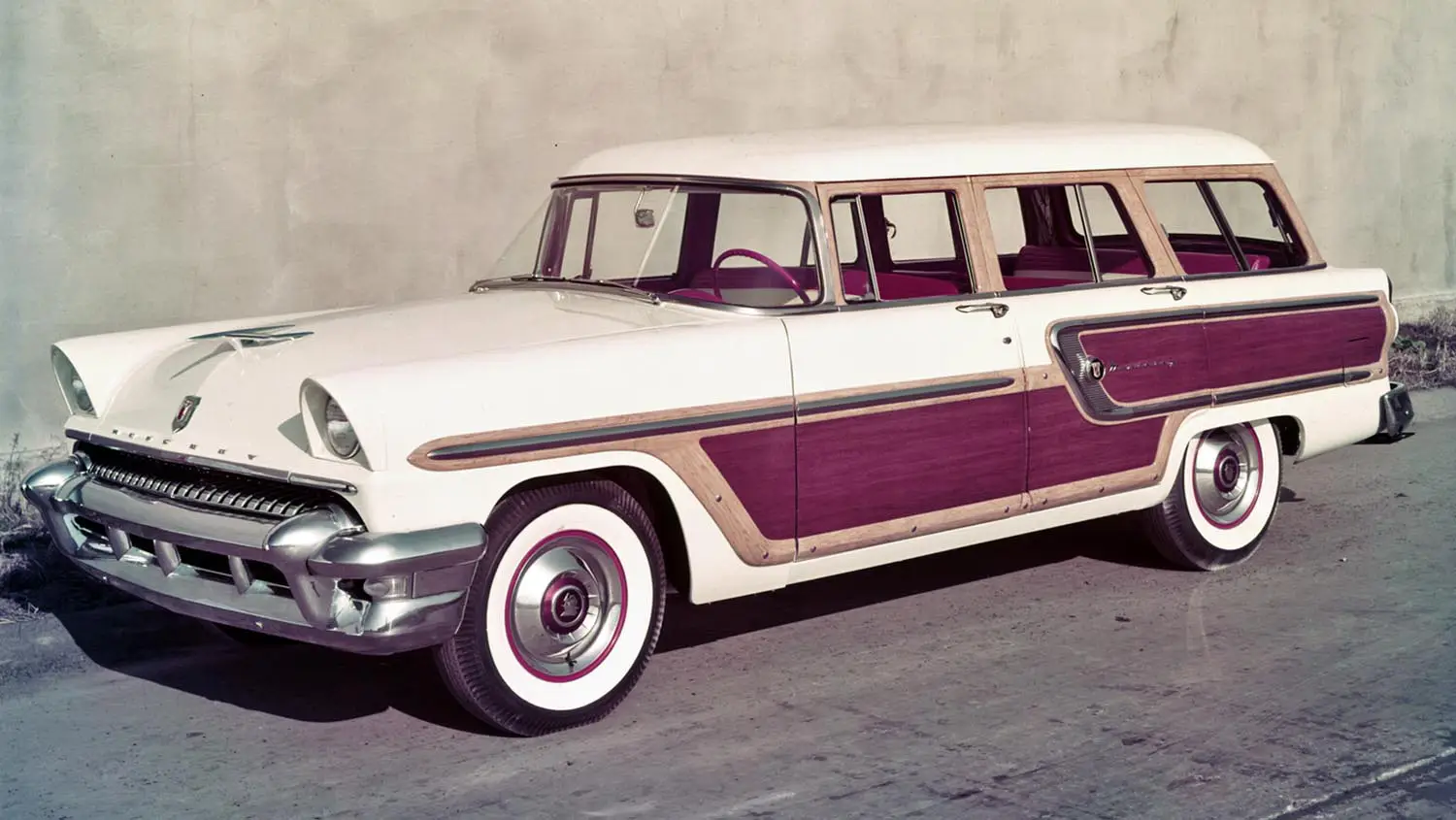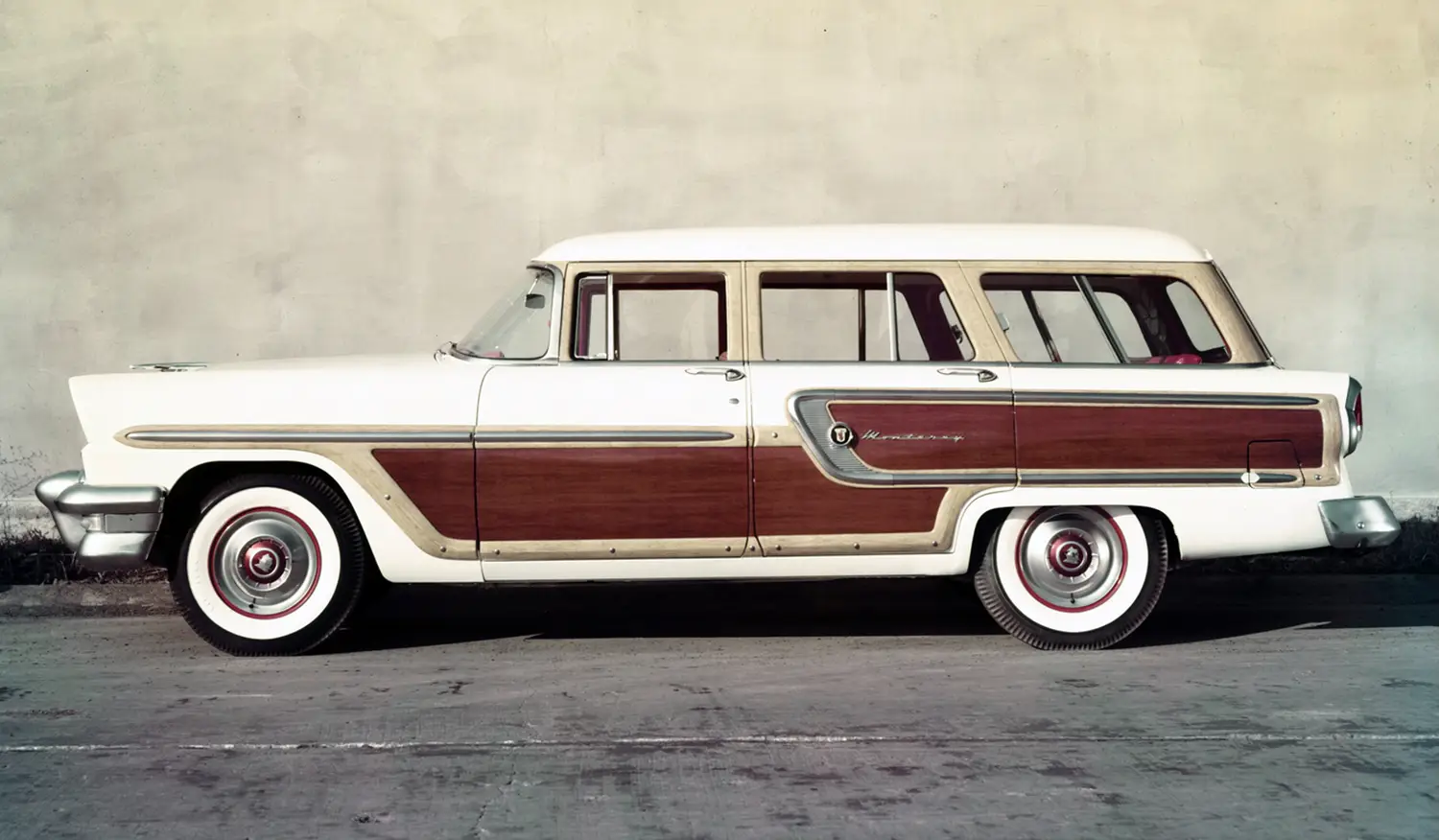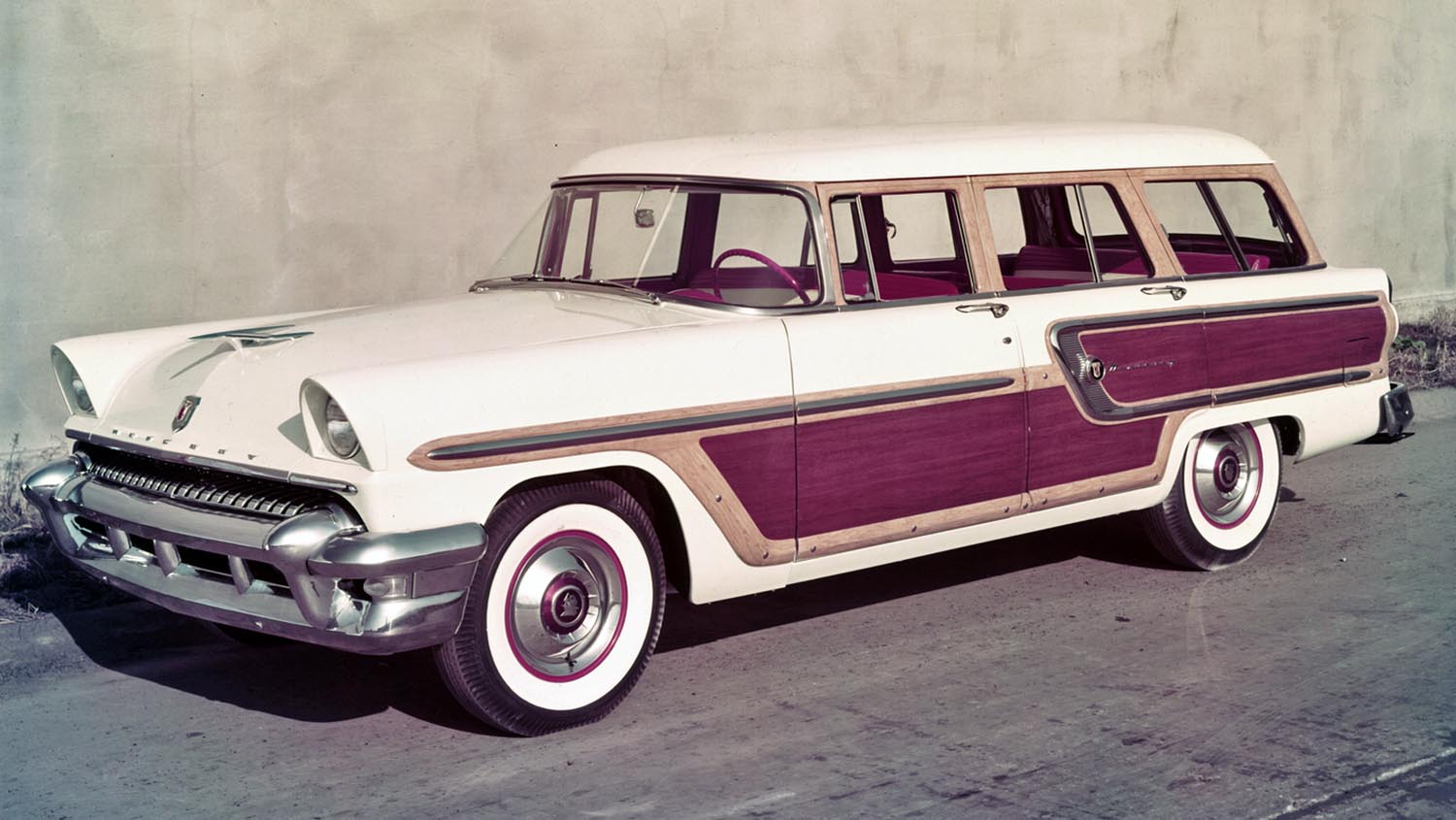 The 1955 Mercury Monterey Station Wagon exemplifies mid-century American design with its potent blend of family practicality and distinctive style. Its presence on the roads reflected the era’s post-war optimism and attention to detail, appealing to both large families and style-conscious car enthusiasts.
The 1955 Mercury Monterey Station Wagon exemplifies mid-century American design with its potent blend of family practicality and distinctive style. Its presence on the roads reflected the era’s post-war optimism and attention to detail, appealing to both large families and style-conscious car enthusiasts.
Design and Styling Features
The Monterey Station Wagon showcased the new, longer, and lower styling introduced for 1955. It offered a distinctive two-tone paint scheme, often known as “Flo-tone”, and sweeping chrome accents along the sides. Its elongated roofline and rear tailgate added versatility while preserving an elegant appearance. Mercury’s attention to proportion and detail helped this model stand out among station wagons of the period. Signature styling elements included a cantilevered, chromed waterfall grille, sculpted front fenders, and subtle fin-inspired rear detailing. The design balanced everyday functionality with the visual flair that defined Mercury’s mid-century offerings.
Powertrain and Performance
The 1955 Mercury Monterey series introduced the new “Super-Torque” overhead-valve V8 engine, displacing 292 cubic inches (4.8 L). In the Monterey series, this engine was rated at 188 horsepower with the standard transmission, or 198 horsepower when paired with the popular Merc-O-Matic three-speed automatic transmission (an extra-cost option). This V8 provided strong performance for confident cruising on the era’s growing highway system. The car featured an independent ball-joint front suspension for improved handling and ride comfort, which was an advanced feature for its time, and a standard 118-inch wheelbase specific to wagon models.
Interior and Comfort
The cabin emphasized space and usability, with seating for up to eight passengers when equipped with the rare optional third-row seat. It featured bench seating, durable upholstery in cloth and vinyl, and thoughtful trim details like a two-toned dashboard. Large windows offered excellent visibility and contributed to a bright, airy interior. The 1955 models also adopted a 12-volt electrical system, which allowed for the installation of more robust power accessories, including the optional air conditioning. Other optional features like the AM radio and tailored storage solutions enhanced convenience for daily use.
Practicality and Utility
The station wagon format masterfully combined passenger comfort with immense cargo capacity. Its rear design, featuring a liftgate and a drop-down tailgate, allowed for flexible storage. The foldable rear seats created a spacious, flat load floor, making it a highly popular choice among families and lifestyle-oriented drivers of the 1950s.
Heritage and Cultural Impact
The 1955 Mercury Monterey Station Wagon was positioned as a premium family vehicle, and the wagon bodystyle was the most expensive in the Monterey line. It quickly became associated with the burgeoning American suburban lifestyle, symbolizing reliability, practicality, and mid-century design excellence. It was part of the second generation of the Monterey line and contributed to Mercury’s success during the mid-fifties.
Collectibility and Legacy
Collectors value the Monterey Station Wagon for its unique combination of classic ’50s styling and utility. Restored examples, especially the sought-after “Woody” style trim (simulated wood grain panels were often used on wagons), command high prices, showcasing authentic two-tone finishes and period-correct details. Its blend of practicality, powerful performance for the time, and iconic design ensures its enduring appeal as a classic American automotive landmark.
Disclaimer: Content on this site is for informational purposes only. Vehicle specs, pricing, and availability may change. Always verify details with official sources before making decisions. Opinions are those of the authors.
Source: Ford Heritage Vault

